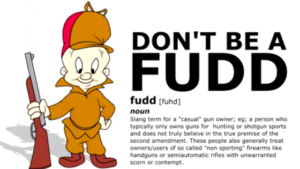Most experienced CPL people have a box full of holsters. Why? The truth is, we spend a great deal of research on the firearm we will concealed carry. What is the right size for me? How do I balance capacity with concealability? How do I balance ergonomic control against concealability? Does it support my accessory requirements? Do I like the grips? Does it go pew pew when I hit the trigger?
We spend far less time understanding that the blaster is only one part of the system that is made up of firearm-location-holster-clothing. All of these factors are important if we hope to maximize firearm capability against the requirement of concealability. It is also important to note that the firearm and the clothing in this system are somewhat fixed: They’re already determined. The newly minted CPL’er rarely goes out and buys a whole new wardrobe to accommodate his new firearm, and after such an investment, he is unlikely to buy a new firearm right away to something that may be more suitable.
What’s left is the carry location and the holster that must interface and integrate these two ‘fixed’ factors.
For carry location, the new CPL’er must learn what works for him. Is strong side 3 o’clock the best method? Appendix carry? Small of back? Cross draw? It takes time to learn what works for someone, and each person’s daily range-of-motion requirements may be different. A full time driver who is right handed may find cross draw to be beneficial, or a good shoulder holster position. A desk jockey may get a bit pinched up at appendix carry. Small of back is mostly for sadists.
Once it’s determined where to carry, one then needs to find a holster that carries well in that position. But, In the Waistband (IWB) or Outside the Waistband (OWB)? Which is more concealable with my daily wardrobe? Which is more comfortable? Which is more effective?
While making this decision, along enters the marketing. A simple search engine result will yield a sea of holster flotsam floating towards the screen, each one being the superior product with superior ergo that superior warriors in Kydexstan all swear that they and their Special Forces brethren have trusted their lives with. It’s easy to buy into this for features one may not need, that are just poorly made, or have a bad form factor that would have some people just leaving the uncomfortable mess at home.
We mostly end up getting a holster based on internet reviews and a couple personal recommendations.
Now for the re-do loops.
The odds of assessing all of this correctly on the first go around is slim. As with a sore and injured body part, we rarely understand the range of motion we actually use in a day until something painful is screaming at us about it. And yes, pinching leather or Kydex and an unforgiving pistol slide can be painful. So, a reassessment of carry location occurs. Sometimes the holster can be used in the new location. Sometimes it cannot. Order up another one and throw this in the box.
Once the carry position is a bit better understood, and the holster made for this position is obtained, how does it feel? Does it work as intended? Does it pinch? Does it dig in? Does it________? Odds are this is another holster in the box and a new one purchased. IWB? OWB? New location for these? Add it to the box.
We haven’t even tried to draw it under training duress yet.
It becomes easy to see how concealed carry results in these assessments. It becomes a point of humor among veteran CPL’ers about the box full of holsters and the slight pause after mentioning it as we remember the trials of optimizing OUR carry system for US.
It does get better. After the initial carry gun is replaced with a newer model or another purpose (many people carry a compact model firearm every day but have a ‘mouse gun’ backup of some type for discretionary carry), the lessons learned from the box of holsters are not repeated for the new gun. Range of motion is understood. Carry location has already been determined. Wardrobe considerations have been addressed through experience and modified as time went by.
The system is understood. It is a box of lessons.


